What Color Should I Paint My Basement Ceiling? 10 Great Options
-
Pete Ortiz
- Last updated:
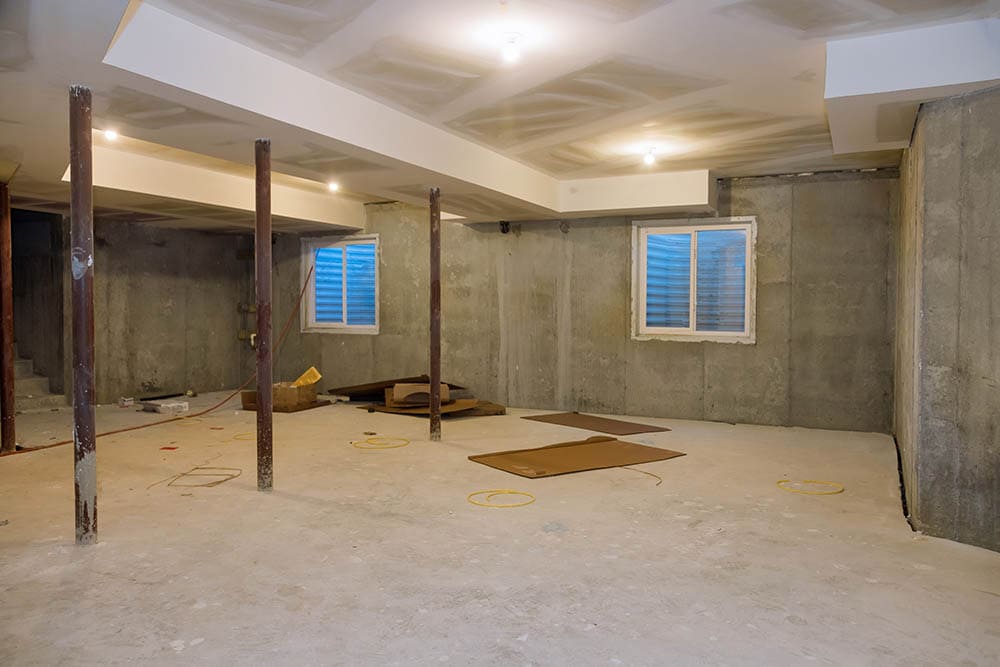
Basements are always fun to renovate. You can stick to a classy, conservative design or go crazy with the colors, textures, and décor elements—it’s totally up to you! Now, the first things we usually focus on are the doors, the floor, and, of course, the walls. But what about the ceiling, though? How do you make it stand out?
Well, why not try to paint it a bold color, like soft pink or bright yellow? Or maybe you want a completely different vibe with black or dark gray? Join us, and let’s check out the 10 best colors for the basement ceiling. We’ll go over dark, light, and neutral colors and talk about reflectivity, hiding imperfections, setting the right tone, and more!
The 10 Great Options to Paint Your Basement Ceiling
1. Black
| Color code | #000000 |
| Color type | Dark |
| Reflectivity level | Zero (doesn’t reflect) |
| Ability to hide flaws | Very high |
| Best used for | A clean, modern look |
If your basement is in a bit of a rough shape, black will be a perfect pick. True, it’s not the most common choice for the ceiling, but thanks to its ability to hide even the biggest flaws (like scratches, dents, or ducts), this color will make the ceiling look brand-new. On top of that, you’ll get a very modern, “sterile” look that’s gaining momentum.
Black looks especially great when paired with gray or white walls and floors. As for bright colors like yellow or green, a black ceiling will make them stand out even more. On the downside, black surfaces have a very low LRV, and that’s a big con if you’re a fan of light, bright rooms. Furthermore, spider webs and dust are more visible on black paint.
2. White

| Color code | #FFFFFF |
| Color type | Neutral |
| Reflectivity level | Very high (98%) |
| Ability to hide flaws | Very low |
| Best used for | Making a room appear bigger |
White paint is the most popular choice when it comes to basement ceilings. And the lighter the tone/hue, the brighter any given space will look and feel. White surfaces add a very warm, inviting touch to any room. Yes, if you paint the whole basement white, you’ll get to visually enhance and enlarge it. So, it would be wise to go with white if you have a particularly small basement.
Unfortunately, white paint is very bad at masking flaws. In fact, it makes them stand out and instantly grab attention. Another downside: to avoid that “cheap” look, you’ll have to use at least 2–3 coats of white paint on the ceiling. If you don’t, it will turn yellowish.
3. Gray
| Color code | #808080 |
| Color type | Neutral |
| Reflectivity level | Low |
| Ability to hide flaws | Average/high |
| Best used for | Creating a warm atmosphere |
Here, we have another classic pick not only for the ceiling but also for the walls, the floors, and the furniture. This color is literally the golden middle between black and white. Therefore, you’ll get all the treats (and downsides) from both sides. It has a low reflectivity level yet does a pretty decent job of making flaws less visible. Gray is commonly used for creating a calming, warm vibe.
There are dozens of different tones, hues, and shades of gray. Before you invest in a can of paint, think about what you’re going for with the basement ceiling. Remember: the lighter the surface, the more reflective it is. With gray, 1–2 coats will be enough to hide most defects.
4. Khaki
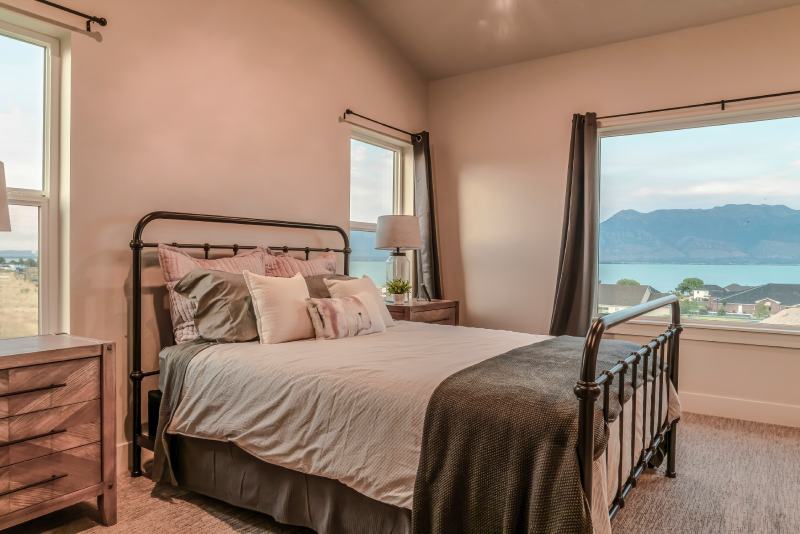
| Color code | #F0E68C |
| Color type | Light |
| Reflectivity level | Average |
| Ability to hide flaws | Average/high |
| Best used for | Introducing a contrast |
Often mistaken for light brown, khaki is a go-to choice for many militaries around the world. In many ways, it’s a neutral color and goes well with black, white, gray, or even the brightest colors on the palette. At the same time, khaki will help you create a contrast, turning a somewhat boring basement into a “battle” of colors.
Khaki has an average reflectivity level and can mask most minor defects and flaws. So, should you pick it for the basement ceiling, or not? If this is your first time trying to repaint the ceiling, you might want to go with the more conventional colors. Still, khaki will be a safer color than red, yellow, green, or, let’s say, pink.
5. Yellow
| Color code | #FFFF00 |
| Color type | Light |
| Reflectivity level | High |
| Ability to hide flaws | Very low |
| Best used for | Lighting up the room |
Wait, does yellow look good on a basement ceiling? Won’t it introduce a childish vibe? If you go with the brightest yellow tones, then yes, that’s probably exactly what you’ll get. However, just like all the other colors, this one has many shades that fit different moods and arrangements. Besides, quite often, basements are used as a playground for kids, which makes yellow an almost ideal pick.
Now, just like all bright colors, yellow boasts a high LRV (it will light up the room, especially if you apply it to the walls as well), yet has a low probability of hiding defects.
6. Slate Blue
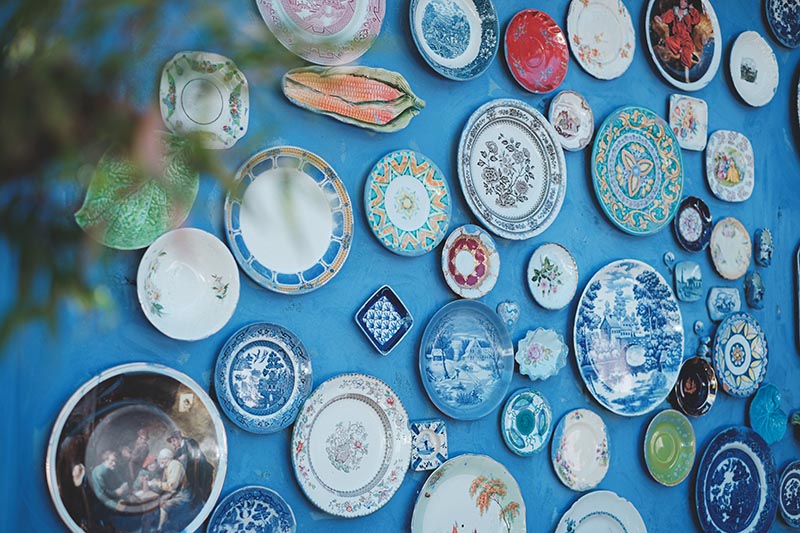
| Color code | #6A5ACD |
| Color type | Light |
| Reflectivity level | Average/high |
| Ability to hide flaws | Low/average |
| Best used for | A classy, “expensive” look |
Much like yellow, blue has many different shades, but for a basement ceiling, slate blue has proven to be the best tone. It has a conservative, classy look that will fit a wide range of applications. It’s not bold, over-the-top, or fancy, but that’s exactly what makes it a popular color for many improvised home offices. It doesn’t really matter whether you want to work, relax, or even work out.
This color on the ceiling will set the right mood. Much like gray, slate blue is equally reflective and decent at making flaws go away. More good news: this is quite an affordable paint.
7. Pastel Green
| Color code | #C1E1C1 |
| Color type | Light |
| Reflectivity level | Average/high |
| Ability to hide flaws | Average |
| Best used for | A calm, peaceful vibe |
When you mix green with yellow, you get pastel green. It’s not as bright as these colors tend to be, though, and can be used for hiding minor defects. At the same time, it has above-average LRV, which makes it a great choice as a neutral color in terms of lighting. If you like to spend most of your time in the basement and want a peaceful, tranquil atmosphere, this color will help you achieve just that.
Pastel green is often paired with khaki, brown, gray, black, and even white (although this combination might be a bit too bright for some people). Bright green is also a reasonable choice for a basement ceiling, but we’d recommend going with pastel green first to “test the waters”.
8. Beige (Creamy)
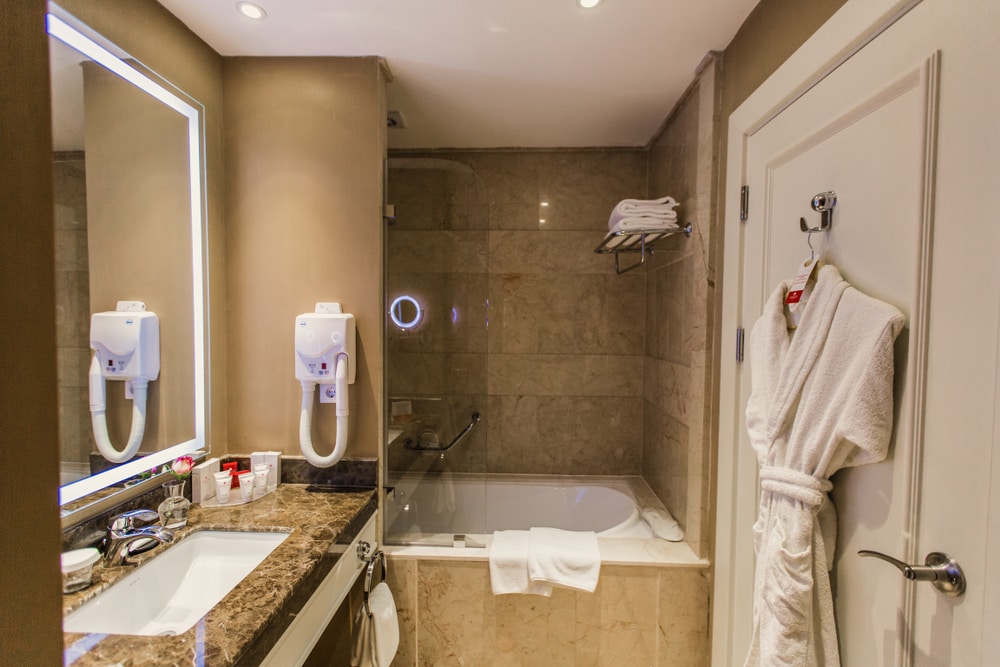
| Color code | #F5F5DC |
| Color type | Neutral |
| Reflectivity level | Average |
| Ability to hide flaws | Very low/low |
| Best used for | Blending with other colors |
Just like khaki, beige is sometimes confused with brown, yellow, or even white. Well, it does, indeed, have the properties of all these colors but offers its own, unique touch. Beige (the creamy kind) is the color of natural wool and should be thought of as an alternative to white and gray. If you’re tired of “generic” tones and want something a bit different yet conventional, beige will help you achieve just that.
It blends very well with concrete, wood, and bricks, along with a wide range of colors.
9. Soft Pink
| Color code | #FFC0CB |
| Color type | Light |
| Reflectivity level | High |
| Ability to hide flaws | Very low |
| Best used for | Introducing an energetic touch |
This right here is one of the least used colors for a basement ceiling. So, why is it on the list, exactly? We included soft pink because it deserves a lot more attention than it gets. It doesn’t have to be overly bright or make the basement look like it belongs to a parlor from the 80s. This color does a great job of complementing vintage furniture and wooden floors.
It won’t make every single flaw on the ceiling disappear, though (this depends on how dark or light the tone is, of course), but it will make the room much brighter. As a bonus, soft pink adds a playful, energetic touch that most basements tend to lack.
10. Teal
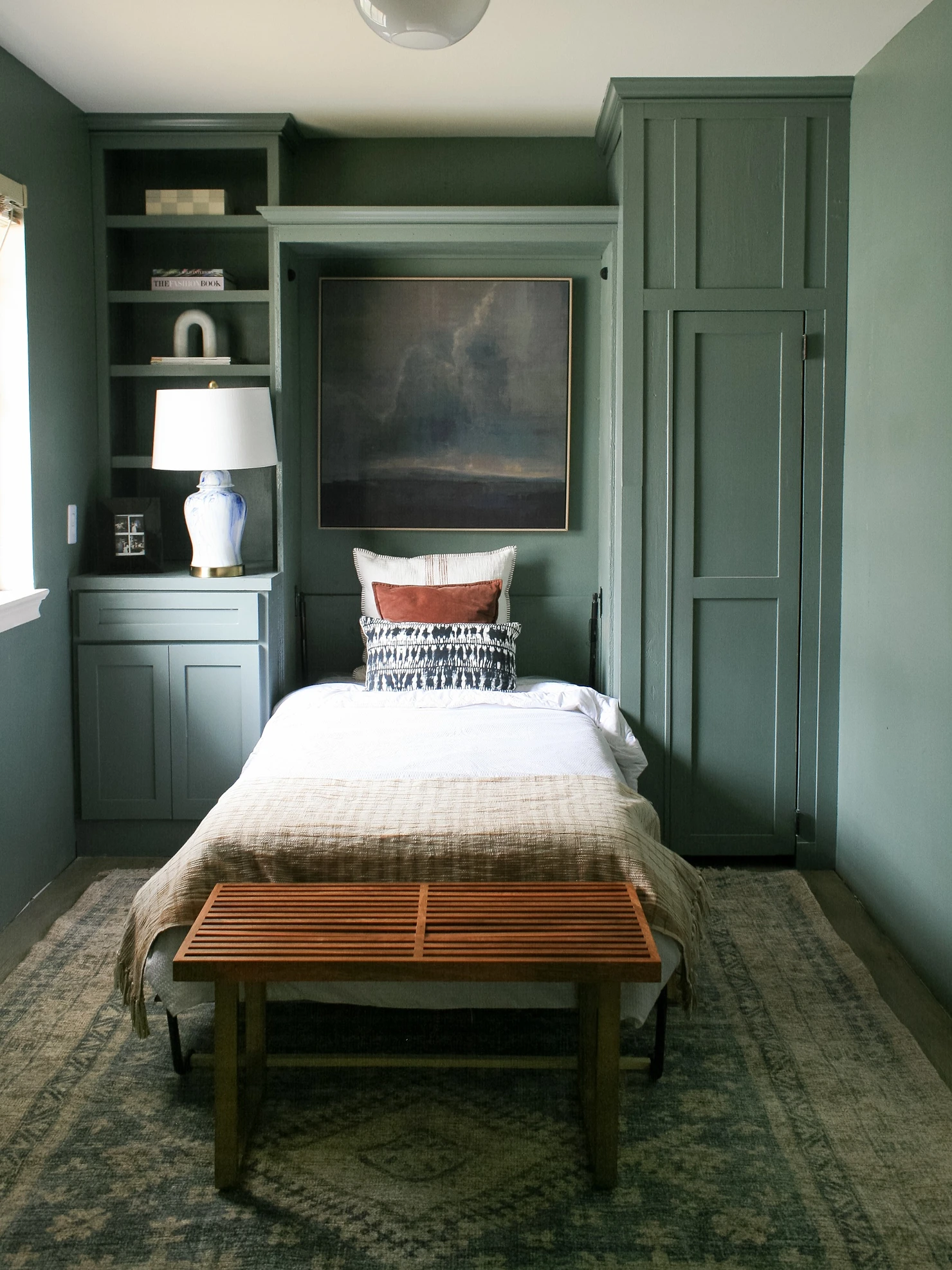
| Color code | #008080 |
| Color type | Dark |
| Reflectivity level | Low |
| Ability to hide flaws | Average |
| Best used for | Serenity and a soothing vibe |
Is teal blue? Or maybe it’s green? No, teal is a combination of these two colors. Technically, you could get a can of green paint and mix it with blue, but it will be much easier to just buy teal paint instead. It’s not very reflective yet hides scratches, cracks, and even chipped-off concrete or wood on the ceiling. Like pastel green, teal introduces a soothing aura to the basement.
Darker than turquoise and cyan, teal has always been praised for its luxurious, royal character. That’s why this color is often used in expensive, premium silk. So, if you go ahead and paint the basement ceiling teal, you’ll transform it from a space that collects dust to something much bigger and better!
What’s the Best Color for My Basement Ceiling?
The first step towards figuring out exactly which color(s) will fit your ceiling is to try and imagine how different tones will look in your setup. If the basement features a cold, minimalistic design, bright colors will probably not be a perfect match. Industrial designs go hand in hand with black, white, and gray. Maximalist décor, in turn, matches bold and vivid colors like yellow, green, red, and pink.
So, yes, to create harmony in the basement, choose the tones and hues according to what the rest of the room looks like. If your basement is a makeshift photo studio, you’ll need all the light in the world. And if you just want to relax, darker tones will be a better pick.
Matching With the Walls: Pros & Cons
Is this your first time painting a basement ceiling? Then it might be wise to play it safe and paint it the same color as the walls. Or, at least, pick shades with similar brightness and LRV. Another commonly used trick is to paint the ceiling and/or the floor black if the walls are white, and vice versa. Letting the walls dictate your color choice has one big pro: you won’t be able to mess anything up stylistically.
As for the downsides, the basement will look a bit boring. Besides, if the tones are dark with low reflectivity, it will make the room look and feel smaller.
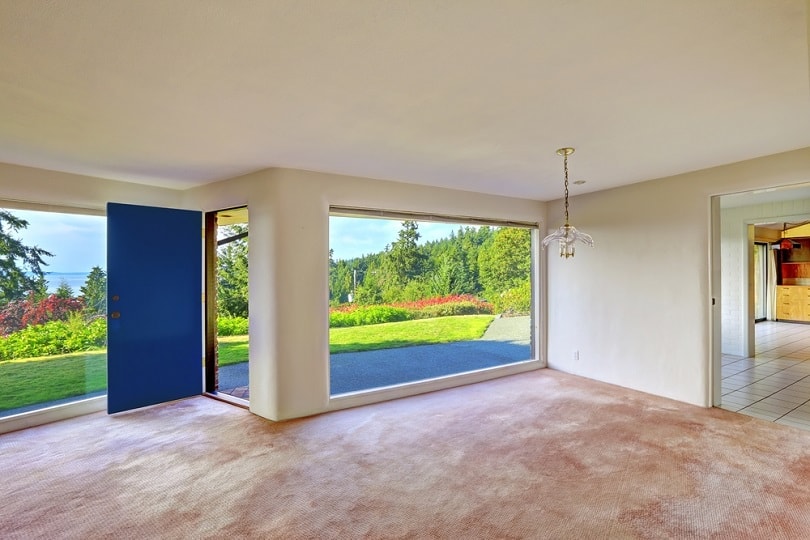
Should You Mix Different Colors on the Ceiling?
Again, when painting walls, floors, and ceilings, there aren’t any strict rules to follow. It all comes down to what kind of a vibe you’re after. This is especially true for the ceiling. Sometimes, “generic” colors available at the closest home improvement store might not get the job done. That’s when mixing different hues and tones becomes a powerful instrument in your hands.
We’d recommend mixing neighboring colors like red and orange, green and blue, and, let’s say, yellow and brown. This way, you can get the hang of it and still come up with some beautiful mixes. Or, let your inner painting maniac out and create wild combos! Just make sure to check how this new color looks on something like a piece of wood or concrete before applying it to the ceiling.
How Much Will This Cost?
Well, that depends on the size of the ceiling and the quality of the paint. Grab a tape and measure exactly how big the ceiling is in square feet. How do you do that? Start by measuring the length of the ceiling. Next, measure the width and then multiply these numbers/values together. If the ceiling’s shape is more complex, break it down into smaller parts to get the measurements right.
In any case, once you have the square footage, divide that by 350–400, as that’s how many sq. ft. a gallon of paint covers. Finally, check out the prices at a local store/online and get the paint that fits your budget. On average, a gallon of decent-quality latex-based paint costs $15–55 ($2–4 per square feet). Oil-based paints are a bit more expensive and will set you back $20–65. Premium-quality paint, in turn, costs up to $100 or even more.
 In Conclusion
In Conclusion
We usually go down into the basement to grab something or to store some goods. But what if you could turn it into the new favorite place to hang out? Even if you’re on a small budget, you’ll be amazed by how big of a difference the ceiling can make. Take some time to experiment with different shades and tones, and once you find the one that “clicks”, it will be so worth it!
Today, we reviewed ten remarkable colors that will look great on any basement ceiling yet have different vibes. With green, you’ll get a peaceful, tranquil atmosphere. Black and blue have that classic, clean look, while khaki is great at creating a lovely contrast. Go ahead and take your pick!
- TheCalculatorSite – Square Footage Calculator
- This Old House – How Much Paint Do I Need?
- Com – How Much Does It Cost To Paint A Room?
- THE ULTIMATE GUIDE TO PAINT COLORS, LRV AND MORE
- Best Paint Colors for Rooms With Little Natural Light
- Why does black attract heat and white reflects heat?
- What is the best color to paint a basement ceiling
- The Best Color To Paint Basement Ceiling? (Complete Guide)
- The 5 Absolute Best Colors for Painting Basement Ceilings
- What Color Should I Paint My Exposed Basement Ceiling?
- TexasWesleyan – Images: Color Codes
- ArtInContext – Shades of Teal
- DiamondVogel – What is LRV?
Featured Image Credit: ungvar, Shutterstock
Contents


